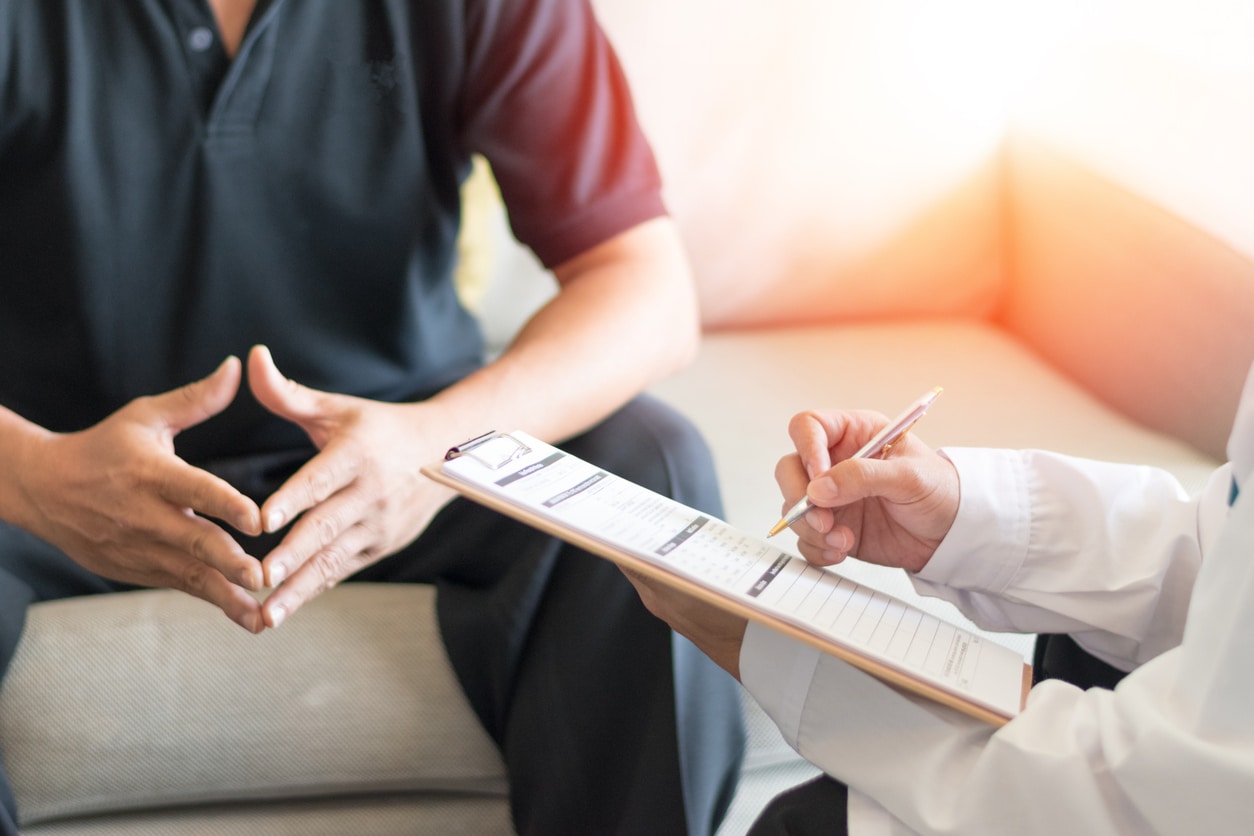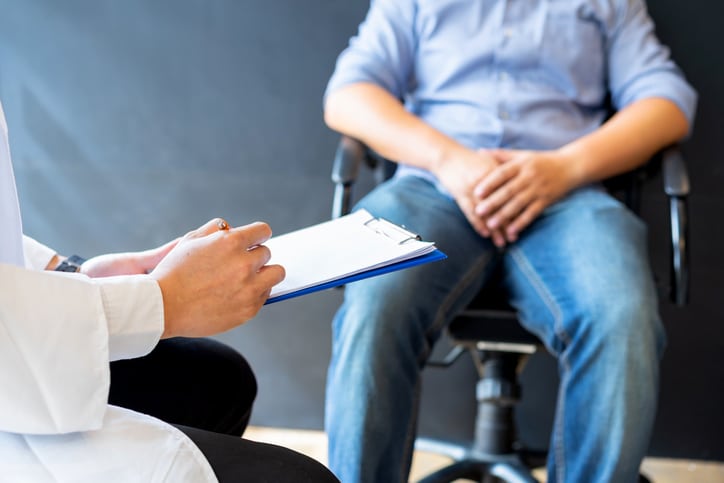Overactive Bladder in Chattanooga, TN
What is an overactive bladder?
Overactive bladder causes a frequent and sudden urge to urinate that the person may not be able to control. The condition makes the person feel as if they need to pass urine many times during the day and night. There may be urinary incontinence, the involuntary loss of urine. Urinary incontinence can be an embarrassing problem, leading the person to avoid social situations.
OAB and Urgency Incontinence are different from another common type of urine leakage called Stress Urinary Incontinence. In this condition, people leak with coughing, laughing, sneezing, lifting or other exertional activities. This is caused by a weakness in the muscles that support the bladder and urethra. Many people will experience both Stress Incontinence and Urgency Incontinence.
Providers Specializing in Overactive Bladder
What are the effects of overactive bladder?
Overactive Bladder (OAB) has profound effects on the lives of those who suffer these symptoms:
- Expense of buying pads
- Discomfort and expense from Urinary Tract Infections
- Loss of sleep
- Isolation from friends and family out of embarrassment or fear
- Loss of enjoyment from social activities such as movies, dinners, sporting events
- Strained personal relationships with spouses, other family, or friends
The causes of a Overactive Bladder
In normal function, as the bladder fills it sends nerve signals to the brain of the upcoming need to urinate. The brain will then coordinates the relaxation of the pelvic floor muscles and the muscles that control the urethra. Then the muscles of the bladder contract and push the urine out.
When a person has overactive bladder the muscles of the bladder start to contract involuntarily even when the volume of urine in the bladder is low. These involuntary bladder contractions create the feeling of a need to urinate.
Several conditions can be associated with an overactive bladder:
- Neurological disorders, such as multiple sclerosis or a stroke
- Diabetes
- Urinary tract infections that create similar symptoms
- Hormonal changes during menopause in women
- Abnormalities in the bladder, such as bladder stones or a tumor
- Factors that obstruct bladder outflow, such as an enlarged prostrate, constipation, or previous operations to treat other forms of incontinence
Other factors can also be involved:
- Medications that cause a rapid increase in urine production
- Declining cognitive function with aging, clouding communication between the brain and the bladder
- Walking difficulty, making it difficult to get to the bathroom in time
- Incomplete bladder emptying
How common is overactive bladder?

Many men and women with OAB never talk with their doctor about their symptoms because they are too embarrassed: they don’t know there are treatment options, or they just think that it is “part of getting older”.
Unfortunately, many healthcare professionals do not always ask about these symptoms. It may be helpful to bring up your symptoms yourself or to seek care from someone who specializes in this area. At UT Urology, our Overactive Bladder Clinic is a specialized clinic dedicated to diagnosing and managing urinary incontinence, giving patients access to the only urologists in the region with fellowship training that included incontinence. We offer the most advanced options for diagnosis as well as the full range of treatment options for incontinence.
Click to Call Today
The tests we offer for overactive bladders
The evaluation of Overactive Bladder begins with questions about your symptoms such as how frequently you urinate or how often you leak urine. We will ask about medications you may take, previous surgeries you have had, and your daily habits. We will also perform a physical exam to check for other causes of your symptoms. Usually, the diagnosis of Overactive Bladder (OAB) does not require invasive or uncomfortable tests.
- A bladder diary is a record of a few days of your daily input and urine output. It helps to characterize your symptoms and look for other medical causes.
- A simple urine test is conducted in the office. Depending on the findings, we may send the sample to the lab for more testing.
- In certain patients, a painless ultrasound of the bladder may be used to see how well you are emptying your bladder.
More invasive tests such as looking in the bladder with a lighted scope (called a cystoscope) or a bladder pressure test (called urodynamics) are only necessary in patients with complicating factors, such as blood in the urine or a prior incontinence surgery. These may also be appropriate for certain patients who have not responded to multiple therapies. We are able to conduct any testing needed at one location to make your evaluation as convenient as possible.
Patient Testimonial
What People Say About Us!
“The staff is very helpful and friendly. The wait time was not very long and you’re always treated kindly.” -Jake P.
Click here to read more reviews.
What are the treatments for Overactive Bladder?

Behavioral Changes
This is usually the first choice in treating OAB, though some people will benefit from combining these changes with other treatments.
A bladder diary may help you see patterns that may explain your symptoms, such as drinking a lot of fluids at night. Studies show that keeping a bladder diary can help to significantly improve your symptoms.
Reducing foods or beverages that may be irritating to the bladder are helpful for some people. You can try to reduce possible irritants such as caffeinated drinks, carbonated drinks, acidic foods (tomatoes, citrus fruits and juices), spicy foods, artificial sweeteners or dyes to see if your symptoms improve. If they do, you can add these back one-by-one to see which may be causing a problem for you.
Reducing the total fluid intake may improve symptoms for some people. This is best done after reviewing your bladder diary, because excessive fluid intake is not the cause of OAB for most people and reduction of fluids may lead to constipation, which may actually worsen symptoms.
Timed voiding involves urinating on a set schedule and can help you to control your symptoms and avoid episodes of urine leakage. You can gradually train yourself by slowly expanding the time interval between trips to the bathroom.
Pelvic floor exercises (often called Kegel exercises) may help to strengthen the muscles used to hold back urine. Strengthening these muscles may help give you more control of your urinary urgency and may help decrease leakage episodes. It may be helpful to visit a specialized provider called a pelvic floor physical therapist, especially if you are having trouble identifying which muscles to exercise.
Medications
Medications are often prescribed for patients who are not improved enough with behavioral changes. Medications appear to work better if they are combined with behavioral changes, so you may want to do both.
Medications help to relax the bladder and reduce the signal to the brain telling you that you need to urinate before the bladder is full. They may also help to decrease the leakage associated with urgency as well.
Medications can be very effective but may have side effects in some people. You should discuss concerns about side effects as well as medications you are already taking or problems you already have that may help to choose one medication over another.
Medications may be taken by mouth or may be applied to the skin as gels or patches. There are over-the-counter patches that you can try as well.
Advanced Therapies
Not every patient will see satisfactory improvement with medication and behavioral changes, and some patients will be unable to take medications because of side effects or other medical conditions.
In neuromodulation, weak electrical signals are used to change the way the bladder sends signals to the brain. In posterior tibial nerve stimulation the nerve to the bladder is stimulated in the foot through the skin using a very small needle. In sacral neuromodulation a small wire is place along the nerve to the bladder near the bone in your pelvis called the sacrum. The wire is attached to a small controller that can be buried underneath the skin of the buttocks.
Small doses of botulinum toxin (Botox) may be injected into the bladder to treat OAB in patients who have not responded to medications and behavioral changes. This will typically need to be repeated after 9-10 months to maintain its effectiveness. In some patients, botulinum toxin may make it difficult to empty the bladder completely.
At The OAB Clinic at Erlanger East, we have years of experience treating hundreds of patients with these advanced therapies. We are able to use this experience to give you best opportunity to achieve the control to allow you to resume all of the activities that make life so enjoyable.
What are the benefits of Botox injections for overactive bladder?
Botox is an effective treatment for overactive bladder. It enables patients to stop taking medications for their overactive bladders, many of which have unpleasant side effects. Also, most OAB medications have proven to have only mixed effectiveness.
- Allows patients to stop taking daily OAB medications.
- Botox only needs to be placed in the bladder about once every six months.
- The Botox injections at UT Urology only take a few minutes.
- Patients can reduce their daily leakage episodes by 50% or more.
- These injections allow patients to return to normal life without worrying about leakage.
- Botox injections can allow a patient with OAB to regain their confidence.
- Botox injections can make social embarrassment a thing of the past.
Should I be concerned about getting a urinary tract infection from Botox?
Urinary tract infections are the most common side effect with Botox injections for overactive bladder, occurring in 18% of patients during clinical studies (versus 6% with placebo). To help prevent this, you will be given an antibiotic prior to your treatment, and you may have a prescription to use afterward.
The possible side effects of Botox
In addition to a urinary tract infection, a small percentage of patients may not be able to urinate after Botox injection. This is temporary and is often treated with intermittent catheterization to drain the bladder until it can function normally again, this may take several weeks.
Click to Call Today
Do Botox bladder injections hurt?
Your bladder is first filled with a numbing agent for several minutes. You may also be offered an oral sedative if you would like. The Botox injections are delivered through a small lighted tube called a cystoscope that is inserted into your bladder through your urethra. Due to the lidocaine (a numbing agent), you don’t feel much pain.
How Long After my Botox injections for overactive bladder Will I Start to See Results?
After receiving your first Botox injections at UT Urology, most patients begin to notice results within 1 week. This is the time it takes the Botox to relax the overactive bladder muscle causing your problems.
What Will My Results Look Like with Botox injections for overactive bladder?
Botox has been thoroughly researched for treating overactive bladder. Here are some numbers:
- Botox injections resulted in an average of 3 fewer leakage episodes per day at week 12.
- At week 12, Botox reduced daily leakage in a majority of patients by half, with many of these patients having episodes reduced by 75%, and about one quarter of these patients having their episodes completely stopped.
How long Botox injections can provide Relief for OAB
Botox provides at least a 50 percent decrease in OAB symptoms for about 6 months. This timeframe can vary, and some patients may need re-treatment sooner.
What is my next step?
Millions of people suffer with symptoms of Overactive Bladder including urinary urgency, frequency and incontinence. Many of these people will not discuss these issues with their care providers out of embarrassment, fear of unknown treatments or the idea that this is a normal part of aging. Urinary leakage is always abnormal and should be addressed if it is keeping you from doing activities that you find enjoyable. At The OAB Clinic at Erlanger East, we have specialized in providing the most advanced care available for the treatment of Overactive Bladder. We have the only Urologists in the region who have completed fellowship training including incontinence. We routinely treat patients with even the most complicated incontinence problems, including those who have failed prior therapies or have complications from prior procedures.
Schedule a Consultation
To learn more about our Botox Injections to help treat Overactive Bladder issues, contact us today at (423) 778-8478 for our Erlanger East Campus office, and (423) 778-6941 for our Two Northgate Chattanooga, TN and the surrounding areas.
Schedule Your Consultation




